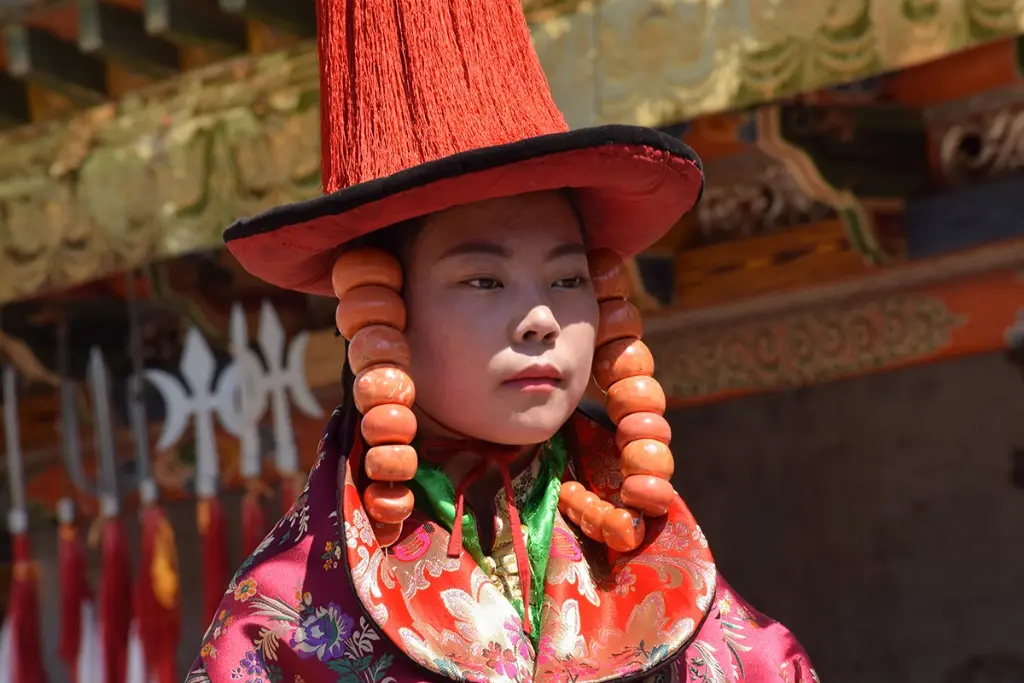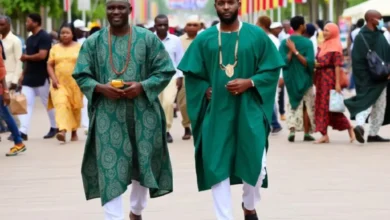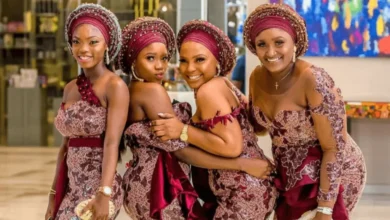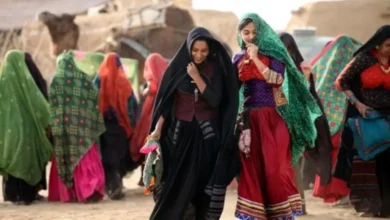Central Asian Clothing: A Tapestry of Tradition and Modernity
Central Asia, a vast region encompassing countries like Kazakhstan, Uzbekistan, Tajikistan, Kyrgyzstan, and Turkmenistan, boasts a rich and diverse cultural heritage, vividly reflected in its traditional clothing.
For centuries, these garments have served not only as protection from the harsh climate but also as powerful symbols of identity, social status, and artistry. While modern trends have inevitably influenced contemporary fashion, the legacy of traditional Central Asian clothing continues to inspire and captivate, offering a window into the region’s fascinating history and vibrant cultural tapestry.





The Influence of Nomadic Life

The history of Central Asian clothing is deeply intertwined with the region’s nomadic past. For centuries, pastoralist communities traversed the steppes and mountains, relying on readily available materials and practical designs.
This nomadic lifestyle dictated the creation of clothing that was both durable and functional. Garments were often loose-fitting to allow for ease of movement while riding horseback or tending livestock. Natural materials like wool, felt, silk, and cotton were favored, chosen for their warmth, breathability, and availability.
See also Fouta Towels: The Ultimate Guide to Size, Material & Uses
Fouta Towels: The Ultimate Guide to Size, Material & Uses
The harsh climate also played a significant role. Heavy, layered clothing was essential for protection against the cold winters, while lighter fabrics were necessary during the hot summers. Clever design elements, such as intricate stitching and layering, helped to regulate body temperature and provide maximum insulation.
Key Garments: A Closer Look
Chapan (Чапан): The Iconic Central Asian Robe

Arguably the most iconic garment of Central Asia, the chapan is a long, loose-fitting robe typically worn by men. Its design varies slightly depending on the specific region and ethnic group, but it generally features long sleeves, a high collar, and intricate embroidery or embellishments. The chapan is often made from heavy fabrics like velvet or silk, reflecting both the wearer’s wealth and social standing.
Kelte (Келте): The Women’s Equivalent

The female equivalent of the chapan is the kelte, although the term can vary regionally. It is also a long robe, typically made from brightly colored fabrics and richly adorned with embroidery, showcasing the wearer’s artistry and skill. Unlike the chapan which is often dark or deep-colored, the kelte tends to be more vibrant.
Shalwar (Шальвар): Loose Trousers

Shalwar, loose-fitting trousers gathered at the ankles, are a ubiquitous feature of Central Asian clothing, worn by both men and women. Their loose design allows for freedom of movement, a crucial aspect for a nomadic lifestyle. They are typically made from cotton, silk or wool, depending on the season and region.
See also Gele Headwrap: Styles, How-to Tie, & Inspiration
Gele Headwrap: Styles, How-to Tie, & Inspiration
Doppi (Доппи): Traditional Headwear

The doppi, a traditional cap or hat, is an essential component of Central Asian menswear. Its style and materials differ considerably depending on region and ethnicity. Some are made of felt or fur for warmth, while others are crafted from silk or velvet for special occasions. The doppi often features intricate embroidery or other decorative elements.
Regional Variations
While certain garments like the chapan and shalwar are found across Central Asia, regional variations are significant. The specific styles, materials, colours, and embellishments reflect the unique cultural identities of each region and ethnic group. For instance, Uzbek embroidery differs distinctly from Kyrgyz or Kazakh styles, showcasing a vibrant diversity within Central Asian fashion.
Kazakhstan’s clothing often incorporates elements from Russian and Siberian styles due to historical influences. Tajikistan’s clothing reflects the country’s Persian heritage, often featuring intricate patterns and vibrant colors. Kyrgyz clothing is known for its use of felt and its bold, geometric designs, while Turkmen textiles are celebrated for their rich colors and intricate weaving techniques. Uzbek garments often feature intricate embroidery, often using the suzani technique, creating stunningly elaborate patterns.
Embroidery and Ornamentation: A Reflection of Culture
Embroidery and other forms of ornamentation play a pivotal role in Central Asian clothing. These embellishments are not merely decorative; they often hold symbolic meaning, reflecting the wearer’s social status, tribal affiliation, or personal beliefs. Traditional motifs, passed down through generations, frequently depict nature, animals, and geometric patterns. The skill and precision of the embroidery often showcase the artistry and craftsmanship of the makers.
The specific techniques and patterns vary across different regions and ethnic groups. For example, the suzani embroidery of Uzbekistan is known for its densely packed, colorful floral motifs, while Kyrgyz embroidery often features geometric patterns and bold, contrasting colors.
Materials and Techniques: A Legacy of Craftsmanship
Central Asian clothing utilizes a range of natural materials, including wool, silk, cotton, and felt. The choice of material is often dictated by both practicality and aesthetic considerations. Wool provides warmth and durability, ideal for the harsh winters, while silk and cotton offer breathability for warmer months. Felt, a material created from compressed wool, is also widely used, especially in the creation of hats and other accessories.
The techniques employed in creating Central Asian clothing represent centuries of accumulated knowledge and skill. Hand-weaving, embroidery, and dyeing are all integral to the production of these garments. Many of these traditional techniques are still practiced today, often passed down through families and communities.
Modern Interpretations: Tradition Meets Contemporary Style
While traditional Central Asian clothing remains an important part of cultural identity, it has also adapted to modern trends. Contemporary designers are incorporating elements of traditional garments into modern designs, creating a unique fusion of tradition and innovation. This blending of styles results in clothing that is both aesthetically pleasing and respectful of the region’s rich heritage.
Modern adaptations often retain the essence of traditional designs while incorporating contemporary fabrics, silhouettes, and color palettes. This approach allows for the preservation of cultural heritage while making traditional clothing relevant to contemporary tastes.
Central Asian Clothing Today: Preservation and Promotion
The preservation and promotion of Central Asian clothing represent a commitment to safeguarding a valuable cultural heritage. Efforts are underway to document traditional techniques, support artisans, and raise awareness of the significance and beauty of these garments.
Museums, cultural centers, and fashion initiatives play a key role in showcasing and celebrating Central Asian clothing, ensuring its continued relevance and appreciation for generations to come.



